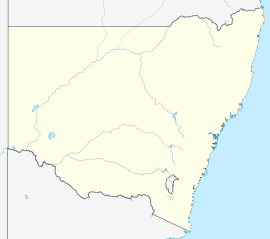Berrima, New South Wales
|
Berrima New South Wales |
|||||||||||||
|---|---|---|---|---|---|---|---|---|---|---|---|---|---|

Historic court house in Berrima (completed 1838)
|
|||||||||||||
| Coordinates | 34°29′S 150°21′E / 34.483°S 150.350°ECoordinates: 34°29′S 150°21′E / 34.483°S 150.350°E | ||||||||||||
| Population | 600 (2011 census) | ||||||||||||
| Established | 1830 | ||||||||||||
| Postcode(s) | 2577 | ||||||||||||
| Location | |||||||||||||
| LGA(s) | Wingecarribee Shire | ||||||||||||
| Region | Southern Highlands | ||||||||||||
| County | Camden | ||||||||||||
| Parish | Berrima | ||||||||||||
| State electorate(s) | Goulburn | ||||||||||||
| Federal Division(s) | |||||||||||||
|
|||||||||||||
Berrima (/ˈbɛrɪmə/) is a historic village in the Southern Highlands of New South Wales, Australia, in Wingecarribee Shire. The village, once a major town, is located on the Old Hume Highway between Canberra and Sydney. It was previously known officially as the Town of Berrima. It is close to the three major towns of the Southern Highlands; Mittagong, Bowral and Moss Vale.
The name Berrima is believed to derive from an Aboriginal word meaning either "southward" or "black swan".
The area around Berrima was once occupied by the Dharawal Aborigines. They had been driven off or killed by the 1870s.
The Wingecarribee River and the area was first visited during the late 1790s, including a 1798 expedition led by an ex-convict, John Wilson. However, John and Hamilton Hume rediscovered the area in 1814. The area was explored by Charles Throsby in 1818. Runs were taken up soon after, including by one by Charles Throsby. Harper’s Mansion, which is on a hill overlooking the town, was built from 1829–1830. Bong Bong had been planned as a major town for the county but, as it was flood prone, the New South Wales surveyor-general Thomas Mitchell chose Berrima townsite on the road running south from Sydney to Goulburn with the intention that the town be the chief centre for southern New South Wales. The survey was conducted in 1830 and the town plan was approved in 1831. As well as its being an administrative centre, there were ambitions that the town might become a commercial and manufacturing centre, "where the wool of Argyle and Camden might be made into cloth and the hide into leather".
...
Wikipedia

